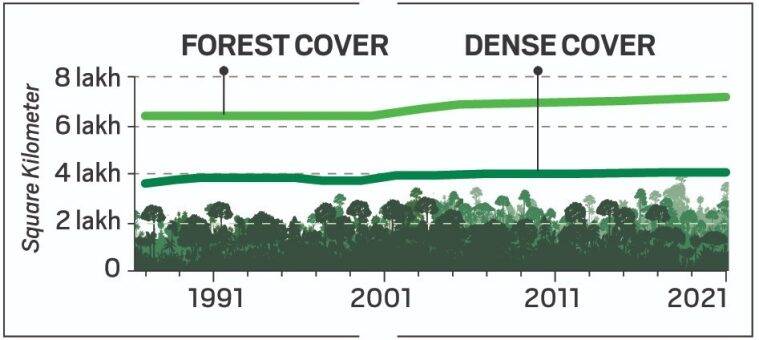900 319 0030
enquiry@shankarias.in
India has a scientific system of periodic forest cover assessment, providing valuable inputs for planning, policy formulation and evidence-based decision-making.
The global standard for forest is provided by the Food and Agriculture Organisation (FAO) of the United Nations: at least 1 hectare of land with a minimum of 10% per cent tree canopy cover. It does not include areas predominantly under agriculture or urban land use in a forest.
